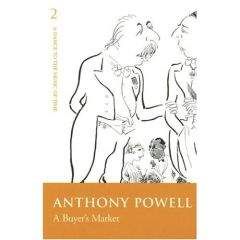Елена Беликова - Английский язык для медиков
На электронном книжном портале my-library.info можно читать бесплатно книги онлайн без регистрации, в том числе Елена Беликова - Английский язык для медиков. Жанр: Медицина издательство -, год 2004. В онлайн доступе вы получите полную версию книги с кратким содержанием для ознакомления, сможете читать аннотацию к книге (предисловие), увидеть рецензии тех, кто произведение уже прочитал и их экспертное мнение о прочитанном.
Кроме того, в библиотеке онлайн my-library.info вы найдете много новинок, которые заслуживают вашего внимания.

Елена Беликова - Английский язык для медиков краткое содержание
Английский язык для медиков читать онлайн бесплатно
Impulse conducting system of the heart consists of specialized cardiac myocytes that are characterized by auto—maticity and rhythmicity (i. e., they are independent of nervous stimulation and possess the ability to initiate heart beats). These specialized cells are located in the sino—atrial (SA) node (pacemaker), intern—odal tracts, atrioven—tricular (AV) node, AV bundle (of His), left and right bundle branches, and numerous smaller branches to the left and right ventricular walls. Impulse conduct ing myocytes are in electrical contact with each other and with normal contractile myocytes via communicating (gap) junctions. Specialized wide—diameter impulse conducting cells (Pur—kinje myocytes), with greatly reduced myofilament components, are well—adapted to increase conduction velocity. They rapidly deliver the wave of depolarization to ventricular myocytes.
New words
heart – сердце
muscular – мышечный
cardiac – сердечный
to pump – качать
endocardium – эндокардиум
innermost – самый внутренний
conducting system – проведение системы
subendocardial – внутрисердечный
impulse – импульс
fibrosi – фиброзные кольца
27. Lungs
Intrapulmonary bronchi: the primary bronchi give rise to three main branches in the right lung and two branches in the left lung, each of which supply a pulmonary lobe. These lobar bronchi divide repeatedly to give rise to bronchioles.
Mucosa consists of the typical respiratory epithelium.
Submucosa consists of elastic tissue with fewer mixed glands than seen in the trachea.
Anastomosing cartilage plates replace the C—shaped rings found in the trachea and extra pulmonary portions of the pri mary bronchi.
Bronchioles do not possess cartilage, glands, or lymphatic nodules; however, they contain the highest proportion of smooth r muscle in the bronchial tree. Bronchioles branch up to 12 times to supply lobules in the lung.
Bronchioles are lined by ciliated, simple, columnar epithelium with nonciliated bronchiolar cells. The musculature of the bronchi and bronchioles con tracts following stimulation by parasympathetic fibers (vagus nerve) and relaxes in response to sympathetic fibers. Terminal bronchioles consist of low—ciliated epithelium with bronchiolar cells.
The costal surface is a large convex area related to the inner surface of the ribs.
The mediastinal surface is a concave medial surface, contains the root, or hilus, of the lung.
The diaphragmatic surface (base) is related to the convex sur face of the diaphragm. The apex (cupola) protrudes into the root of the neck.
The hilus is the point of attachment for the root of the lung. It contains the bronchi, pulmonary and bronchial vessels, lym phatics, and nerves. Lobes and fissures.
The right lung has three lobes: superior, middle and inferior.
The left lung has upper and lower lobes.
Bronchopulmonary segments of the lung are supplied by the segmental (tertiary) bronchus, artery, and vein. There are 10 on the right and 8 on the left.
Arterial supply: Right and left pulmonary arteries arise from the pulmonary trunk. The pulmonary arteries deliver deoxygenated blood to the lungs from the right side of the heart.
Bronchial arteries supply the bronchi and nonrespirato—ry por tions of the lung. They are usually branches of the thoracic aorta.
Venous drainage. There are four pulmonary veins: superior right and left and inferior right and left. Pulmonary veins carry oxygenated blood to the left atrium of the heart.
The bronchial veins drain to the azygos system.
Bronchomediastinal lymph trunks drain to the right lymphatic duct and the thoracic duct.
Innervation of Lungs: Anterior and posterior pulmonary plexuses are formed by vagal (parasympathetic) and sympathetic fibers. Parasympathetic stimulation hasa broncho—constrictive effect. Sympathetic stimulation has a broncho—dilator effect.
New words
lungs – легкие
intrapulmonary bronchi – внутрилегочные бронхи
the primary bronchi – первичные бронхи
lobar bronchi – долевые бронхи
submucosa – подслизистая оболочка
28. Respiratory system
The respiratory system is structurally and functionally adapt ed for the efficient transfer of gases between the ambient air and the bloodstream as well as between the bloodstream and the tissues. The major functional components of the res piratory system are: the airways, alveoli, and blood vessels of the lungs; the tissues of the chest wall and diaphragm; the systemic blood vessels; red blood cells and plasma; and respi ratory control neurons in the brainstem and their sensory and motor connections. LUNG FUNCTION: provision of O 2 for tissue metabolism occurs via four mechanisms. Ventilation – the transport of air from the environment to the gas exchange surface in the alveoli. O 2 diffusion from the alveolar air space across the alveolar—capillary membranes to the blood.
Transport of O 2 by the blood to the tissues: O 2 diffusion from the blood to the tissues.
Removal of CO 2 produced by tissue metabolism occurs via four mechanisms. CO 2 diffusion from the tissues to the blood.
Transport by the blood to the pulmonary capillary—alveolar membrane.
CO 2 diffusion across the capillary—alveolar membrane to the air spaces of the alveoli. Ventilation – the transport of alveolar gas to the air. Functional components: Conducting airways (conducting zone; anatomical dead space).
These airways are concerned only with the transport of gas, not with gas exchange with the blood.
They are thick—walled, branching, cylindrical structures with ciliated epithelial cells, goblet cells, smooth muscle cells. Clara cells, mucous glands, and (sometimes) cartilage.
Alveoli and alveolar septa (respiratory zone; lung parenchyma).
These are the sites of gas exchange.
Cell types include: Type I and II epithelial cells, alveolar macrophages.
The blood—gas barrier (pulmonary capillary—alveolar membrane) is ideal for gas exchange because it is very thin (< 0,5 mm) and has a very large surface area (50 —100 m 2). It consists of alveolar epithelium, basement membrane in—terstitium, and capillary endothelium.
New words
respiratory – дыхательный
air – воздух
bloodstream – кровоток
airways – воздушные пути
alveoli – альвеолы
blood vessels – кровеносные сосуды
lungs – легкие
chest – грудь
diaphragm – диафрагма
the systemic blood vessels – системные кровеносные сосуды
red blood cells – красные кровяные клетки
plasma – плазма
respi ratory control neurons – дыхательные нейроны контроля
brainstem – ствол мозга
sensory – сенсорный
motor connections – моторные связи
ventilation – вентиляция
transport – транспортировка
environment exchange – окружающая среда
surface – поверхность
29. Lung volumes and capacities
Lung volumes – there are four lung volumes, which when added together, equal the maximal volume of the lungs. Tidal volume is the volume of one inspired or expected normal breath (average human = 0,5 L per breath). Inspiratory reserve volume is the volume of air that can be inspired in excess of the tidal volume. Expiratory reserve volume is the extra an that can be expired after a normal tidal expiration.
Residual volume is the volume of gas that re lungs after maximal expiration (average human = 1,2 L).
Total lung capacity is the volume of gas that can be con tained within the maximally inflated lungs (average human = 6 L).
Vital capacity is the maximal volume that can be expelled after maximal inspiration (average human = 4,8 L).
Functional residual capacity is the volume remaining in the lungs at the end of a normal tidal expiration (average luman = 2,2 L).
Inspiratory capacity is the volume that can be taken into the lungs after maximal inspiration following expiration of a normal breath. Helium dilution techniques are used to determine residual volume, FRC and TLC. A forced vital capacity is obtained when a subject inspires maximally and then exhales as forcefully and as completely as possible. The forced expiratory volume (FEV1) is the volume of air exhaled in the first second. Typically, the FEV1 is approximate 80 % of the FVC.
GAS LAWS AS APPLIED TO RESPIRATORY PHYSIOLOGY: Dalton's Law: In a gas mixture, the pressure exerted by each gas is independent of the pressure exerted by the other gases.
A consequence of this is as follows: partial pressure = total pressure x fractional concentration. This equation can be us ed to determine the partial pressure of oxygen in the atmosphere. Assuming that the total pressure (or barometric pressure, PB) is atmospheric pressure at sea level (760 mmHg) and the fractional concentration of O 2 is 21 %, or 0,21: P02 = 760 mmHg χ 0,21 = 160 mmHg. As air moves into the airways, the partial pressures of the va—ri ous gases in atmospheric air are reduced because of the addi tion of water vapor (47 mmHg). Henry's Law states that the concentration of a gas dissolved in liquid is proportional to its partial pressure and its solubility coef fi—cient (Ks). Thus, for gas X, [X] = Ks χ Px
Fick's Law states that the volume of gas that diffuses across a barrier per unit time is given by:
Vgas = Y x D x (P1 – P2)
where A and T are the area and thickness of the barrier, P1 and P2 are the partial pressures of the gas on either side of the barrier and D is the diffusion constant of the gas. D is directly proportional to the solubility of the gas and inversely proportional to the square root of its molecular weight.
New words
lung – легкое
tidal – вдыхаемый и выдыхаемый
inspired – вдохновленный
breath – дыхание
human – человек
residual – oстаточный
helium – гелий
dilution – растворение
techniques – методы
30. Ventilation
Total ventilation (VT, minute ventilation) is the total gas flow into the lungs per minute. It is equal to the tidal volume (VT) x the respiratory rate (n). Total ventilation is the sum of dead space ventilation and alveolar ventilation.
Anatomic dead space is equivalent to the volume of the conducting airways (150 mL in normal individuals), i. e., the trachea and bronchi up to and including the terminal bronchioles. Gas exchange does not occur here. Physiologic dead space is the volume of the respiratory tract that does not participate in gas exchange. It includes the anatomic dead space and partially functional or nonfunctional alveoli (e. g., because of a pulmonan embolus preventing blood supply to a region of alveoli). In normal individuals, anatomic and physiologic dead space are approximately equal. Physiologic dead space can greatly exceed anatomic dead space in individuals with lung disease.
Dead space ventilation is the gas flow into dead space per minute. Alveolar ventilation is the gas flow entering functional alveoli per minute.
Alveolar ventilation: It is the single most important parameter of lung function. It cannot be measured directly. It must be adequate for removal of the CO 2 produced by tissue metabolism whereas the partial pressure of inspired O 2 is 150 mmHg, the partial pressure of O 2 in the alveoli is typically 100 mmHg because of the displacement of O 2 with CO 2. PAo2 cannot be measured directly.
New words
total – общее количество
ventilation – вентиляция
flow – поток
per minute – в минуту
equal – равный
the conducting – проведение
airways – воздушные пути
exchange – обмен
tract – трактат
to be measured – быть измеренным
directly – непосредственно
displacement – смещение
31. Air flow
Air moves from areas of higher pressure to areas of lower pres sure just as fluids do. A pressure gradient needs to be established to move air.
Alveolar pressure becomes less than atmospheric pressure when the muscles of inspiration enlarge the chest cavity, thus lowering the intrathoracic pressure. In—trapleural pressure decreases, caus ing expansion of the alveoli and reduction of intra—alveolar pressure. The pressure gradient between the atmosphere and the alveoli drives air into the airways. The opposite occurs with expiration.
Air travels in the conducting airways via bulk flow (mL/min). Bulk flow may be turbulent or laminar, depending on its velocity. Velocity represents the speed of movement of a single particle in the bulk flow. At high velocities, the flow may be turbulent. At lower velocities transitional flow is likely to occur. At still lower velocities, flow may be laminar (streamlined). Reynold's number predicts the air flow. The higher the number, the more likely the air will be turbulent. The velocity of particle movement slows as air moves deeper into the lungs because of the enormous increase in cross—sectional area due to branching. Diffusion is the primary mechanism by which gas moves between terminal bronchioles and alveoli (the respiratory zone).
Airway resistance: The pressure difference necessary to produce gas flow is directly related to the resistance caused by friction at the airway walls. Medium—sized airways (> 2 mm diameter) are the major site of airway resistance. Small airways have a high individual resis tance. However, their total resistance is much less because resistances in parallel add as reciprocals.
Factors affecting airway resistance: Bronchocon—striction (increased resistance) can be caused by parasympathetic stimulation, histamine (immediate hyper—sensitivity reaction), slow—reacting substance of anaphyla—xis (SRS—A = leukotrienes C4, D4, E4; mediator of asthma), and irritants. Bronchodilation (decreased resistance) can be caused by sympathetic stimulation (via beta–2 receptors). Lung volume also affects airway resistance. High lung vol umes lower airway resistance because the surrounding lung parenchyma pulls airways open by radial traction. Low lung volumes lead to increased airway resistance because there is less traction on the airways. At very low lung vol umes, bronchioles may collapse. The viscosity or density of inspired gases can affect airway resistance. The density of gas increases with deep sea div ing, leading to increased resistance and work of breathing. Low—density gases like helium can lower airway resistance During a forced expiration, the airways are compressed by increased intrathoracic pressure. Regardless of how forceful the expiratory effort is, the flow rate plateaus and cannot be exceeded. Therefore, the air flow is effort—independent; the collapse of the airways is called dynamic compression. Whereas this phenomenon is seen only upon forced expira tion in normal subjects, this limited flow can be seen dur ing normal expiration in patients with lung diseases where there is increased resistance (e. g., asthma) or increased compliance (e. g., emphysema).
Похожие книги на "Английский язык для медиков", Елена Беликова
Елена Беликова читать все книги автора по порядку
Елена Беликова - все книги автора в одном месте читать по порядку полные версии на сайте онлайн библиотеки My-Library.Info.




![Rick Page - Make Winning a Habit [с таблицами]](https://cdn.my-library.info/books/no-image.jpg)